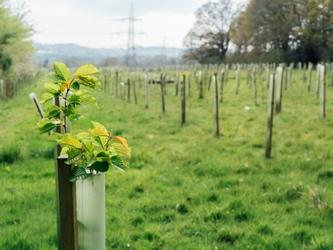It’s not just about switching the lights off

With companies across the world working hard to decrease their carbon emissions, it’s time we started factoring in the environmental impact of tech and data. Everything we do on our computers – from sending and receiving emails to saving and storing files, browsing the internet and video conference calls – adds to our carbon footprint.
Over the last decade, cloud-based storage of data has become the norm. While this frees up space in our offices and limits the need for local servers and clunky desktop computers, this data still needs to be stored somewhere – data centres.
Even though this storage is invisible to us, these centres are typically large buildings or groups of buildings used to house computer systems and require substantial amounts of energy to keep their servers cool and maintain optimal conditions. Cloud services and data storage facilities also rely heavily on electricity generated from fossil fuels in many regions, further adding to carbon emissions.
Data centres not only consume vast amounts of energy but also require substantial water resources for cooling purposes. Anywhere from three million, to five million gallons of water a day is required, which would be enough water for 30,000-50,000 people to use. Many of these data centres are situated in regions already facing water scarcity, putting further strain on local water supplies and ecosystems. As well as carbon and water usage, it’s estimated that data centres account for 2.5-3.7% of the world’s greenhouse gas emissions, exceeding the emissions of the aviation industry.
Our reliance on data centres and cloud storage is only going to grow as technology advances across the world. Currently using around 200 terawatt hours of electricity annually, it’s projected that by 2026, their energy consumption will rise to 1,000TWh and 2,500TWh by 2030.
We’re going to need to find ways of limiting the environmental impact from our data usage. At a macro level, we should be looking at enhancing data centre energy efficiency through innovative cooling techniques, server virtualisation, and advanced infrastructure design can reduce energy consumption and associated emissions.
As individuals and businesses, encouraging responsible data usage and reducing unnecessary data collection and storage can help minimise energy consumption and limit the need for data centres.
The increasing reliance on data-intensive services, such as video streaming, online conference calling and smart technology has led to a surge in internet traffic. This, in turn, places a burden on network infrastructure and leads to more energy consumption in data transmission.
However, even more traditional usages of the internet have a hidden carbon cost. Estimates from Mike Berners Lee have placed the average carbon footprint of an email at 0.3g CO2e (carbon dioxide equivalent), with long emails reaching up to 17g CO2e, or those with one image or attachment included reaching 50g CO2e. This would work out to anywhere from three to 40kgs CO2e over the course of a year, which is the equivalent of driving between 10 to 128 miles in a small petrol car. It might not sound like much on a personal level, but in a company, those numbers really add up.
If you’re trying to reduce your carbon footprint, there are some easy wins by focusing on email:
- You can cut down on the numbers you send by ensuring you only copy people on mails that are relevant to the conversation
- Avoid sending unnecessary emails such as “Thank you”, “You too”, “Received”, etc
- Try to limit how many emails you’re receiving by unsubscribing to any newsletters or promotional emails that you don’t need.
Nobody is suggesting that we go back to sending letters and hard copies instead of emails, just that it’s worth remembering that there is a carbon cost to the emails we’re sending and storing.
Calculating our carbon emissions can be difficult already, without adding the nebulous variables I’ve discussed. However, we need to be armed with the knowledge that our online work lives are having an environmental impact in ways we might not be able to measure as easily as looking at our electric bills.
Once people start to appreciate that ‘the cloud’ is actually a building in Arizona greedily consuming power and water, we can work towards methods of limiting the impact our data storage is having on the planet.
Rich Else is head of sustainability at Cobalt Sky
In earlier articles in the series, Lian Nuttall reflected on why researchers should not turn their back on sustainability during a recession and Zappi’s Nik Hazell outlined how the business is approaching the net zero challenge.

We hope you enjoyed this article.
Research Live is published by MRS.
The Market Research Society (MRS) exists to promote and protect the research sector, showcasing how research delivers impact for businesses and government.
Members of MRS enjoy many benefits including tailoured policy guidance, discounts on training and conferences, and access to member-only content.
For example, there's an archive of winning case studies from over a decade of MRS Awards.
Find out more about the benefits of joining MRS here.













1 Comment
Anon
2 years ago
Yes but "The vast majority of these emissions come from the embodied carbon of the device it was sent on; smaller emissions come from the device’s electricity use, and the networks and data centres which send and store these emails" > sending less emails doesnt stop people buying computers! Better solution to focus on: buy refurbished tech and repair your tech
Like Reply Report